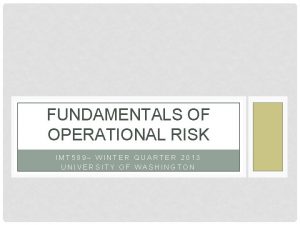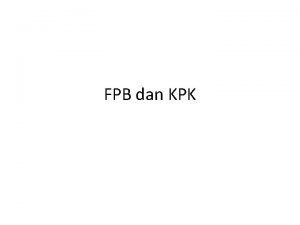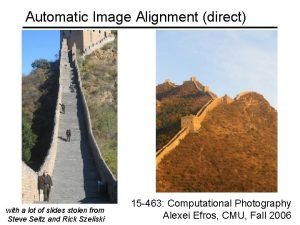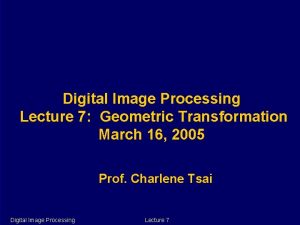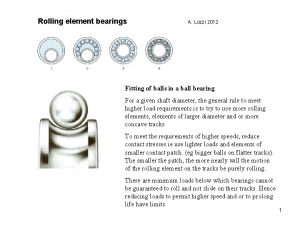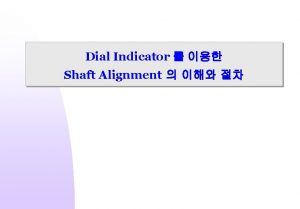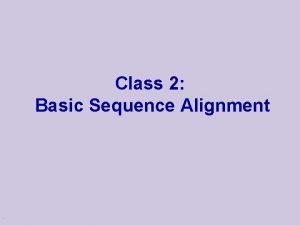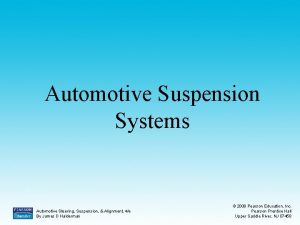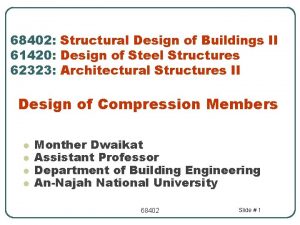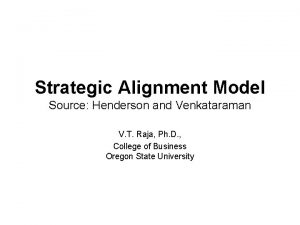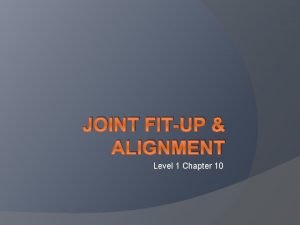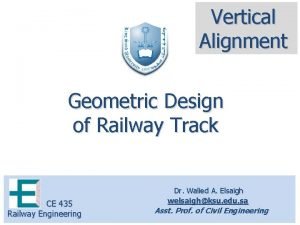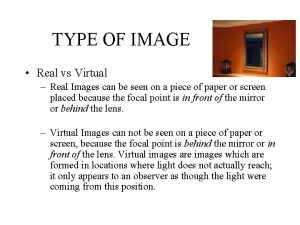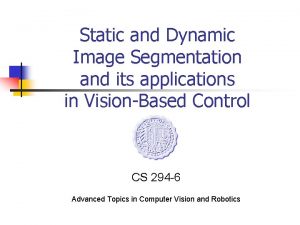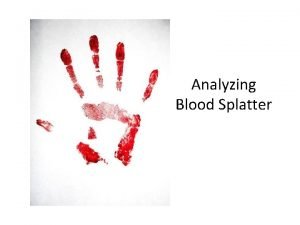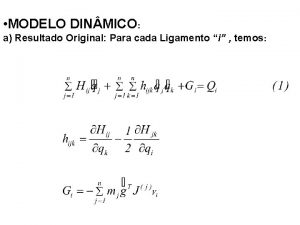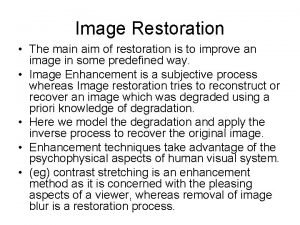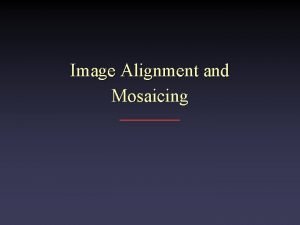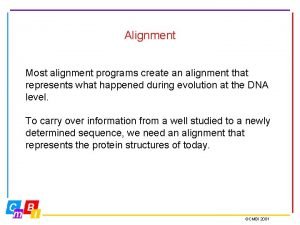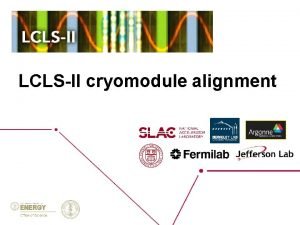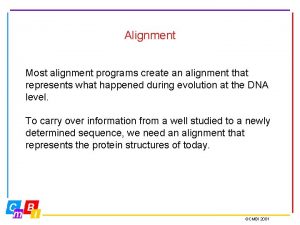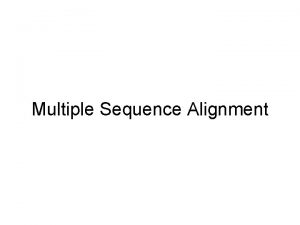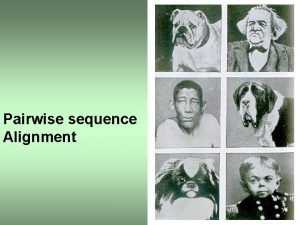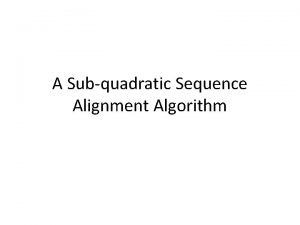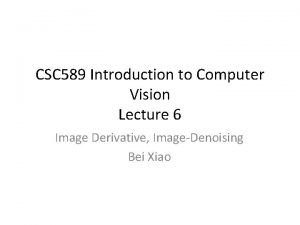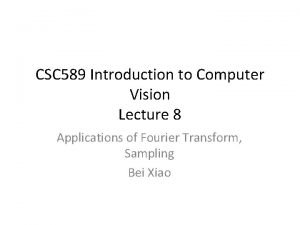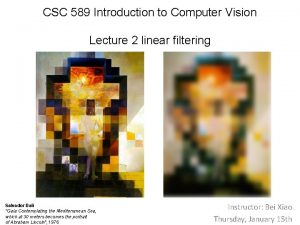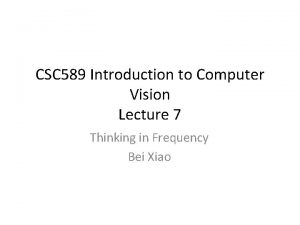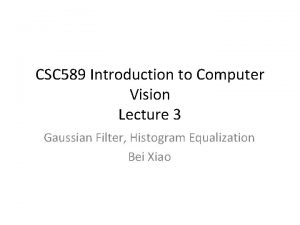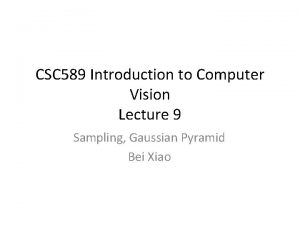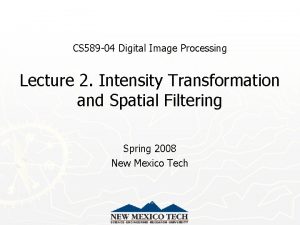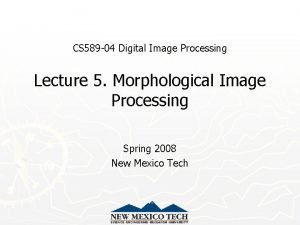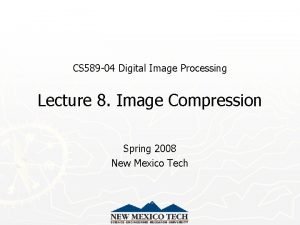CSC 589 Lecture 22 Image Alignment and least
















































- Slides: 48

CSC 589 Lecture 22 Image Alignment and least square methods Bei Xiao American University April 13

Final project • Due May 4 th. • The final websites will be shared among students!! • Presentations will be recorded as a 5 mins you-tube video! We will learn how to do this. • Cite the papers you used and the methods you implemented!! Do not copy codes form the internet!!! If you must copy one or two lines, cite the resources. Plagiarism is easy to detect these days!! • Team members clearly specify who contributed what in your final report.

Reading • Appendix A. 2, 6. 1


A pencil of rays contains all views Can generate any synthetic camera view as long as it has the same center of projection

How to do it? Basic Procedure: – Take a sequence of images from the same position – Rotate the camera about its optical center – Compute transformation between second image and first – Transform the second image overlap the first – Blend the two together to create a mosaic – If there are more images, repeat • But wait, why should this work at all? – What about 3 D geometry of the scenes? – Why aren’t we use it at all?

Image Alignment http: //www. inf. ethz. ch/personal/pomarc/cour ses/Comp. Photo/cpv 03. pdf

Image reprojection The mosaic has a natural Interpretation in 3 D • The images are repojected onto a common plane • The mosaic is formed on this plane • Mosaic is a synthetic wideangel camera


Homography • A projective-mapping between any two PPs with the same center of projection P’ H P Properties of projective transformations: Origin does not necessarily map to origin Lines map to lines Parallel lines do not necessarily remain parallel Ratios are not preserved Closed under composition

Common problems in vision Fitting: find the parameters of a model that best fit the data Alignment: find the parameters of the transformation that best align matched points

Alignment • Alignment: find parameters of model that maps one set of points to another • Typically want to solve for a global transformation that accounts for *most* true correspondences • Difficulties – Noise (typically 1 -3 pixels) – Outliers (often 50%)

Computing transformations ?

Simple case: translations How do we solve for ?

Simple case: translations Displacement of match i = Mean displacement =

Another view • System of linear equations – What are the knowns? Unknowns? – How many unknowns? How many equations (per match)?

Another view • Problem: more equations than unknowns – “Overdetermined” system of equations – We will find the least squares solution

Least squares formulation • For each point • we define the residuals as

Least squares formulation • Goal: minimize sum of squared residuals • “Least squares” solution • For translations, is equal to mean displacement

Least squares formulation • Can also write as a matrix equation 2 n x 2 2 x 1 2 n x 1

Matrix Product mini-review • http: //en. wikipedia. org/wiki/Matrix_multiplic ation • System of linear equations http: //en. wikipedia. org/wiki/System_of_linear_equ ations

Matrix manipulations with Numpy • http: //www. pythoncourse. eu/matrix_arithmetic. php • https: //jameshensman. wordpress. com/2010/ 06/14/multiple-matrix-multiplication-innumpy/

Least squares • Find t that minimizes

Least squares: find t to minimize • To solve, form the normal equations • Differentiate and equate to 0 to minimize

Affine transformations • How many unknowns? • How many equations per match? • How many matches do we need?

Affine transformations • Residuals: • Cost function:

Affine transformations • Matrix form 2 n x 6 6 x 1 2 n x 1

Homographies p p’ To unwarp (rectify) an image • solve for homography H given p and p’ • solve equations of the form: p’ = Hp

Alternate formulation for homographies where the length of the vector [h 00 h 01 … h 22] is 1

Solving for homographies Linear or non-linear?

Solving for homographies

Solving for homographies

Solving for homographies 2 n × 9 9 Defines a least squares problem: • Since is only defined up to scale, solve for unit vector 2 n

Homographies p p’ To unwarp (rectify) an image • solve for homography H given p and p’ • solve equations of the form: p’ = Hp – linear in unknowns: coefficients of H – H is defined up to an arbitrary scale factor – how many points are necessary to solve for H?

Solving for homographies 2 n × 9 9 Defines a least squares problem: • Since is only defined up to scale, solve for unit vector • Solution: = eigenvector of with smallest eigenvalue • Works with 4 or more points 2 n

Recap: Two Common Optimization Problems Problem statement Solution (matlab) Problem statement Solution


Least squares: linear regression (yi, xi) y = mx + b

Linear regression residual error

Linear regression

Image Alignment Algorithm Given images A and B 1. Compute image features for A and B 2. Match features between A and B 3. Compute homography between A and B using least squares on set of matches What could go wrong?

Outliers outliers inliers

Robustness Problem: Fit a line to these datapoints Least squares fit

What can we do? • Suggestions?

Idea • Given a hypothesized line • Count the number of points that “agree” with the line – “Agree” = within a small distance of the line – I. e. , the inliers to that line • For all possible lines, select the one with the largest number of inliers

Counting inliers

Counting inliers Inliers: 3

Counting inliers Inliers: 20
 Alignment in bioinformatics
Alignment in bioinformatics Imt 589
Imt 589 Konsep habis dibagi
Konsep habis dibagi Global vs local alignment
Global vs local alignment Dna substitution
Dna substitution Global alignment vs local alignment
Global alignment vs local alignment Global alignment vs local alignment
Global alignment vs local alignment Image alignment
Image alignment 01:640:244 lecture notes - lecture 15: plat, idah, farad
01:640:244 lecture notes - lecture 15: plat, idah, farad Direct image alignment
Direct image alignment Image alignment
Image alignment Image processing lecture notes
Image processing lecture notes Fluorocein
Fluorocein Analog image and digital image
Analog image and digital image Axial and radial alignment formula
Axial and radial alignment formula Global alignment
Global alignment Fatherclient
Fatherclient Central road fund 1929
Central road fund 1929 Enterprise architecture alignment
Enterprise architecture alignment Reverse indicator alignment
Reverse indicator alignment Difference between local and global alignment
Difference between local and global alignment Automotive steering, suspension and alignment
Automotive steering, suspension and alignment Effective length factor k
Effective length factor k Henderson venkatraman strategic alignment model
Henderson venkatraman strategic alignment model Joint fit up
Joint fit up Similarities of ideal self and actual self
Similarities of ideal self and actual self Railway alignment design and geometry
Railway alignment design and geometry Building equity and alignment
Building equity and alignment What are real and virtual image
What are real and virtual image Virtual vs real image
Virtual vs real image Translate
Translate Optimum notch filter in digital image processing
Optimum notch filter in digital image processing Arithmetic coding in digital image processing
Arithmetic coding in digital image processing Key stage in digital image processing
Key stage in digital image processing Image compression model in digital image processing
Image compression model in digital image processing Image sharpening and restoration
Image sharpening and restoration Static image vs dynamic image
Static image vs dynamic image Geometric transformation in digital image processing
Geometric transformation in digital image processing Gravitational blood drop
Gravitational blood drop Isopreference curve
Isopreference curve Appuyez sur l’image qui est dans le bon sens
Appuyez sur l’image qui est dans le bon sens Difference between logical file and physical file
Difference between logical file and physical file Resultado
Resultado Cameraman.tif
Cameraman.tif Image transforms in digital image processing
Image transforms in digital image processing Maketform matlab
Maketform matlab Noise
Noise E
E Melody randford
Melody randford

